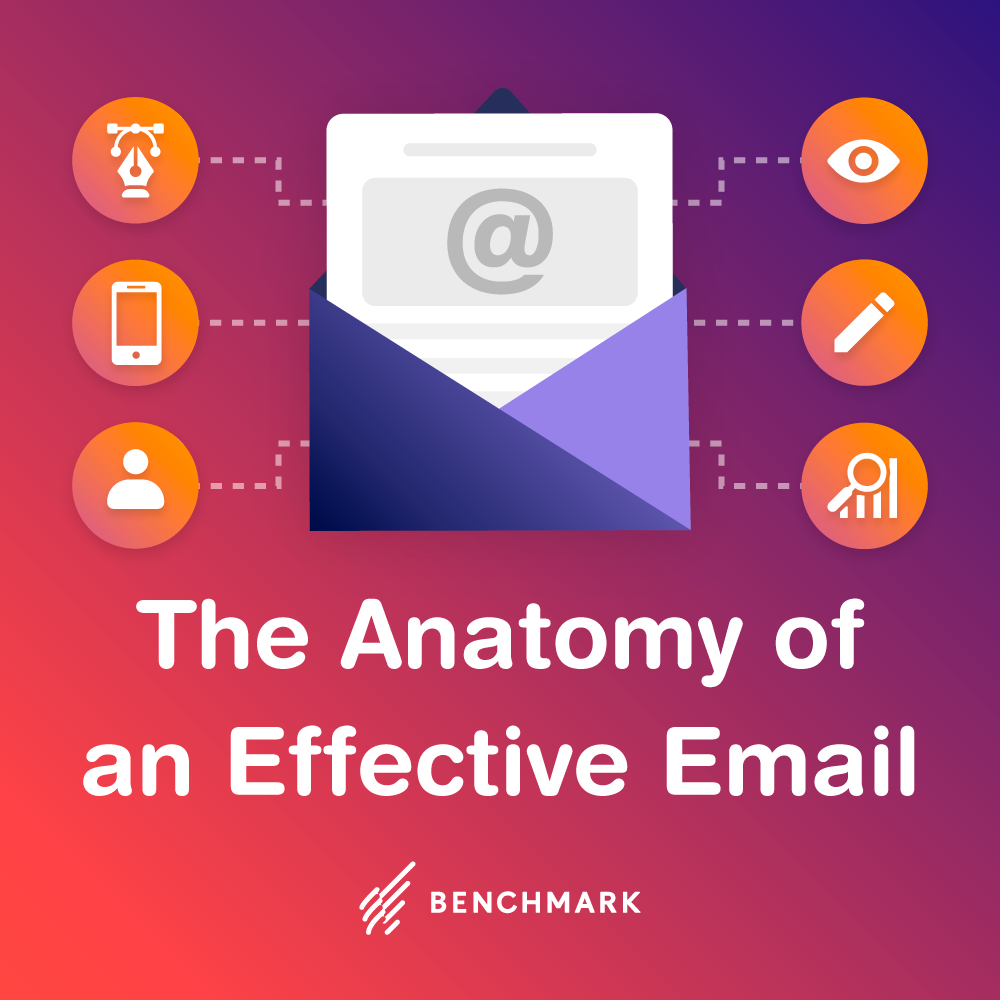
Just before we get started, this article isn’t about us showing you how to make an email look beautiful. This is the sixth article in our deliverability series and the intention is not to teach you design tips here, but to explain the kind of design that your email campaigns need to pass spam filters and get to your recipient’s inbox.
So, what works best? The answer is, in fact, surprisingly simple. What works best are emails that are 100% text. No images.
That’s the answer when looking at the topic purely from a deliverability perspective. I know, though, that you need to balance this ideal with your need to make campaigns that convert and are aesthetically pleasing. It’s up to you how you balance one goal against the other. The important thing is that when you finish reading this article, you’ll understand how to design your campaigns so that your designs don’t harm your deliverability.
Here’s what to keep in mind when designing for deliverability:
Keep your use of images to a minimum
As I mentioned above, in an ideal world, your email would be 100% text. I know that that doesn’t make for beautiful emails but it’s true. If you want to include images, you should aim for a ratio of 70% text and 30% images. The further you are from this 70:30 ratio, with images taking a heavier weighting, the more trouble you’ll have with your deliverability.
Single column designs
Yes, it might not be very exciting but simplicity is the key to success. Creating multi-column or complex emails won’t help you get to the inbox.
Designing single-column emails offers several benefits: content clarity, order and, importantly, your responsive email campaign will be able to more easily adapt to all screen types.
Be careful with colours
The most highly recommended colours are #FFFFFF for the email’s background and #000000 for the font colour. You can imagine which colours they are, can’t you? That’s right, a white background and black text.
Again this would be what you’d use in a perfect world. I know you’ll want to use your company colours but, be careful, don’t go wild with them. Don’t put them as the background colours for example. I’d also recommend that you keep an eye on making sure that there’s a strong contrast between text and background colours. They should not be similar as it makes reading your email a lot more difficult for your recipient.
Font type and formatting
We’re often asked why we only have 17 fonts in our drag & drop editor. The answer is simple. They are the only fonts that are read and accepted by all inbox clients. This means that when you use one of them, you know that it will be shown in that exact format across all inboxes.
Besides choosing the font itself, it’s also best that you keep the text formatting simple. Going all out with bold formatting, for example, could help land your campaign in the spam folder or, if the text is quite large, it might simply SEEM LIKE YOU’RE SHOUTING. Try to keep in mind that usability and the experience of your recipient when interacting with your email is important here.
Spammy words and symbols
This is a classic. You’ve probably already heard that you need to be careful with the kinds of words that you use in your emails because if you abuse words like free, earn money, millions, extra income, free access, work from home, amazing, limited time, mortgages, credit, opportunity, act now, price, thousands, lose weight … or use several exclamation marks, capital letters, currency signs, asterisks or unusual symbols, it’s very likely that you will see poor deliverability.
We often get asked about emojis and, while you can use them, make sure your use of them is relevant and not excessive.
Be careful with links too. Make sure they work and that they are sending your recipient to the right page. An email with false, incorrect or misleading links will look suspicious to spam filters and won’t help further your objectives either.
Subscription links
You probably weren’t expecting to see this last section, but it’s part of the design of emails created in our Drag & Drop editor and has an important impact on deliverability. In this block, you can choose the links to include although the unsubscribe link is not optional. We also recommend that you always include the following at least:
- Manage subscription
- Sent to information
- Report abuse
These links will silently but effectively look after your reputation. Don’t be afraid of including them and always keep things open and transparent for your subscribers.
That’s it for today’s article. Be sure to apply these 6 basic but essential pieces of advice to your email marketing and let us know how you get on.
Help others learn more about email marketing best practices too by sharing on social media and spreading the word. And, if you have any questions for us, just leave a comment below and we’ll get back to you.
Enjoy learning with Benchmark!




